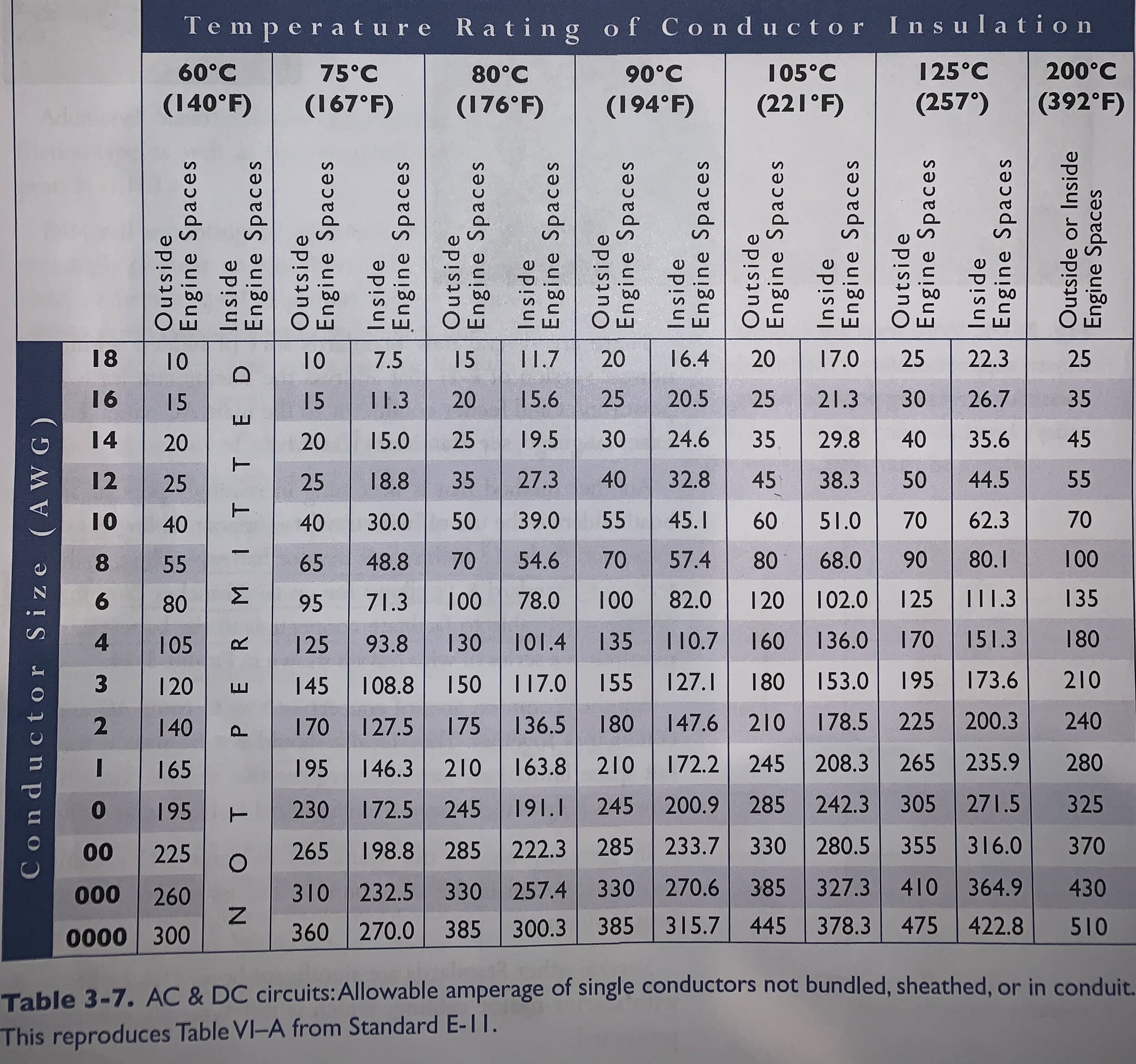What size wire do I need?
A lot of issues arise on recreational yachts and boats from previous owners and untrained maintenance technicians installing too small of wire for the application it was intended for and/or improperly fusing the wire. Undersized wires can cause two major issues:
1) FIRE HAZARD. An undersized wire creates resistance and resistance causes heat. Enough heat could eventually start a fire. If the fire doesn’t burn your boat down, it could result in a lot of damage to bundled electrical wires.
2) VOLTAGE DROP. Voltage drop primarily only applies to your DC system and is not important for you AC system. With DC systems, the longer the wire run is, the potential for voltage drop increases. ABYC requires no more than a 3% voltage drop for critical loads and no more than a 10% voltage drop for non-critical loads.
Determining wire size
To determine the proper wire size, first answer these questions:
1) How many AMPs will flow through the wires? Find the amperage rating of the appliance. If only wattage is given, divide the wattage by the voltage to get the amperage (Watts=Volts x amps).
2) What is the total length of the wire run in feet? Electrical current must go to and from the appliance so always double the wire run length. Example: 20 feet from the breaker panel to the appliance would be 40 feet.
3) Is this a critical load? Critical loads include: DC panel feeders, bilge blowers, electronics and navigation lights. Critical loads require a 3% voltage drop while non-critical loads only require a 10% voltage drop.
4) Does the wire go through an engine room? Engine rooms get hot why your engine is running. Wire size will have to increase if it’s going into an engine room.
5) Will the wire be bundled with other wires? We want to decrease the ampacity of the wire when it’s bundled because a wire that’s heating up in a bundle will heat up more when it is bundled with other wires. The last thing you want is for a large bundle of wires to catch on fire. Not only will that destroy your electrical systems, it will most likely burn your boat down before you can extinguish the fire.
6) What is the voltage? Voltage makes a big difference in how many AMPs are flowing through the wires. Most DC systems are 12 or 24 volts. AC systems are 120 volts for US made boats and 220 volts for European built boats.
7) What temperature rating is the boat electrical cable being used? The sheath on the cable will have a temperature rating. Ancor Wire which is sold in most boating stores has a temperature rating of 105C (221F).
Wow! Thats a lot of information! Lets put it to use.
You can now use all this information to find your correct wire size. Here are some tables and apps available to you.
ABYC Electrical standard E-11
You can now use all this information to find your correct wire size. ABYC Electrical standard E-11 provides tables for maximum ampacity of the wire and also voltage drop tables for both 3% or 10% voltage drop. You must use both tables and pick the largest wire size for the two tables.
Use this table for routing one cable not bundled
Use this table for all DC bundled cables. AC bundled cables have additional tables.
Use this voltage drop table for critical DC loads
Use this voltage drop table for all non critical applications
Blue Sea’s tables
Blue Sea’s is a great company who provides many good resources on their website.
Blue Seas and ABYC applications
This if by far the easiest way to determine your wire size. Simply put, the information it is asking for and then it will spit out a recommended wire size that covers maximum ampacity, bundled wires, engine room, and voltage drop.
Proactive Yacht Service
If all this seems too much, you can hire Proactive Yacht Service to install your electrical wires to ABYC standards.







